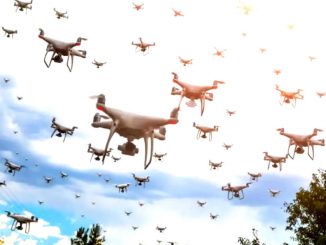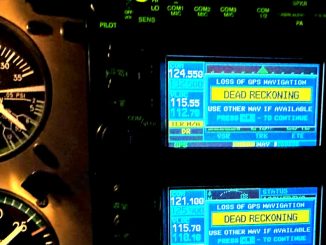
| Published July 20, 2025
Preliminary report shows two fuel switches in the cockpit were moved to a cut-off position, causing the plane to lose lift and crash 32 seconds after takeoff
What should have been a routine flight from Mumbai to Dubai turned into one of the most confounding tragedies in recent aviation history. On June 12, 2025, Air India Flight 171 plunged into the Arabian Sea just moments after takeoff, killing all 271 people on board. Early technical speculation quickly gave way to something more chilling: the aircraft’s fuel control switches—normally locked and guarded—had been manually flipped to “CUTOFF,” shutting down both engines in flight.
Now, with cockpit voice recordings released and preliminary findings from India’s Aircraft Accident Investigation Bureau (AAIB) made public, investigators face a disturbing question: Why would someone in the cockpit deliberately kill the engines just seconds after liftoff? Competing theories, incomplete data, and rising global pressure have only deepened the mystery.
This article consolidates reporting from The Gateway Pundit, Al Jazeera, and the National Post to explore the facts we know, the questions that remain, and the broader implications for cockpit safety, pilot accountability, and global aviation oversight.
🔍 What the records show
-
Cockpit audio captures alarming confusion: Shortly after takeoff on June 12, one pilot—believed to be the first officer—can be heard asking why the fuel control switches were moved to CUTOFF, effectively cutting engine thrust and prompting a plea to restore fuel flow. The responding pilot denies doing so .
-
Early U.S. assessment points to captain’s involvement: American officials reviewing the cockpit voice recorder interpreted the exchange and silence around video evidence to suggest the captain likely turned the switches off.
Preliminary AAIB findings
-
India’s Aircraft Accident Investigation Bureau (AAIB) confirmed:
-
Both fuel switches flipped from RUN to CUTOFF about 3 seconds after takeoff, prompting engine shutdown.
-
A brief engine relight occurred, but it came too late to prevent the crash.
-
There was no indication of mechanical failure, fuel contamination, weather issues, or pilot incapacitation.
-
The switches are designed with guard and lock mechanisms to prevent accidental flips.
-
A 2018 FAA bulletin warned of lock disengagement on Boeing aircraft, but this was advisory and never enforced. Air India had not acted on it.
-
Wider context & reactions
-
Pilot groups and regulators urge caution: The International Federation of Air Line Pilots’ Associations (IFALPA) and others stress that no definitive cause or blame has been established and warn against premature conclusions
-
Calls for enhanced safety oversight: India’s civil aviation authority has mandated inspections of fuel‑control switch data and locking mechanisms across Boeing 787 and 737 fleets
-
Fuel‑switch placement under fire: Critics, including Jeremy Clarkson, remark that placing a fuel cutoff switch where it can be manually triggered in flight—even with guards—is a dangerous cockpit design choice.


The tail of Air India Flight 171 after it crashed in a residential area near the airport in Ahmedabad [Central Industrial Security Force/AFP]
 Implications: A Global Wake-Up Call for Aviation Safety
Implications: A Global Wake-Up Call for Aviation Safety
The crash of Air India Flight 171 has sent shockwaves through the aviation world—not just for the devastating loss of life, but for what the preliminary findings suggest: that a critical safety mechanism may have been bypassed from within the cockpit. While no final conclusions have been reached, the implications already ripple across multiple fronts:
🔧 Cockpit Design Under Scrutiny
The fuel control switches in Boeing aircraft, though protected by lock-and-guard mechanisms, were still vulnerable to manual override. Investigators now question why such vital engine controls remain accessible mid-flight without additional fail-safes or authentication measures. Aviation engineers and regulators alike are calling for urgent reevaluation of cockpit layouts and safety barriers.
🎧 Calls for Cockpit Video Recorders
The incident has reignited long-standing debates over the need for cockpit video surveillance. Audio alone has proven insufficient in clarifying who manipulated the switches. Advocates argue that real-time cockpit video could provide definitive answers in high-stakes investigations like this, while pilot unions raise privacy and stress-related concerns.
👨✈️ Pilot Mental Health and Vetting
Though authorities have not officially attributed blame, the possibility of intentional engine cutoff has triggered renewed focus on pilot psychological screening. Airlines and regulators face renewed pressure to enhance mental health evaluations, including post-hiring monitoring and support systems—especially in high-responsibility positions.
🛫 Policy and Compliance Gaps
The FAA issued a non-binding advisory in 2018 warning of potential locking failures in fuel switch mechanisms. Air India, like many global carriers, reportedly took no corrective action. The crash has exposed the limitations of voluntary compliance, prompting calls for enforceable mandates and more aggressive oversight from aviation bodies.
🌐 Trust in Institutions at Stake
As conflicting narratives emerge—from media reports suggesting pilot sabotage to unions urging restraint—public trust in the investigation process is being tested. Transparency, accountability, and fact-based conclusions will be critical not just for justice, but for preserving global faith in air travel safety.
 Overall Takeaway: A Tragedy Still Unresolved
Overall Takeaway: A Tragedy Still Unresolved
The downing of Air India Flight 171 remains one of the most troubling aviation disasters in recent memory—not because of mechanical failure or extreme weather, but because of what appears to be a deliberate act committed within the cockpit itself. Though investigations are ongoing and no final judgment has been made, the evidence so far has unsettled regulators, pilots, and passengers around the world.
From the chilling cockpit audio to the inexplicable movement of the fuel control switches, every new detail has raised more questions than answers. Yet amid the uncertainty, one truth stands out: this tragedy has exposed critical vulnerabilities in cockpit safety, aircraft design, pilot oversight, and global regulatory enforcement.
As families grieve, officials investigate, and the aviation industry braces for reforms, the legacy of Flight 171 must not be silence. The questions it leaves behind demand not just answers—but action. Only through transparency, technological improvement, and institutional accountability can we hope to ensure that a tragedy like this never happens again.





Be the first to comment